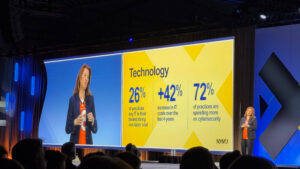We live in a really great time in history. We have so much access to media, and many things about medicine are available for us to consume today. Often we’ll hear about new drugs (Ozempic seems to be the latest craze – Interest in Ozempic grew 50% over the past year, compared to the year before, putting it at a current volume of 2.6M searches per month) OR we’ll hear about the failures of the system (like Politico’s review of issues related to Hospice).
These are just a few of the many things that aren’t hidden from us thanks to a wide array of coverage: Physician shortages – fueled by too few medical students choosing to specialize in primary care. Estimates put the shortage somewhere between 20,000 – 50,000 doctors nationally needed today to fulfill the needs of patients. Physician Burnout – fueled by our Silver Tsunami – specifically the demands placed on the healthcare workers to solve all the needs of a greying population – and by the requirements placed on the profession to engage 20-25 patients per day for 18 minutes each, while managing increasing clerical, administrative and documentation requirements to capture payments on sicker patients for less money. Improper pay – There is also significant asymmetry in work effort relative to reimbursement for primary carers vs specialty providers in surgery or dermatology.
Because of these demands, these physicians often feel they cannot provide the best care to patients. One recent study found that these primary care physicians would need a 26.7 hour shift to follow recommended guidelines for care.
The hidden problem is that we continue to exacerbate these issues by unwittingly placing more and more demands on the physician in primary care. Studies show significant burden on physicians is directly related to inefficiencies associated with Electronic Health Records (EHRs). One such study documented that about half of the workday is dedicated each day toward low value tasks within the EHR. Another study further implicates the software, built to assist in the daily effort, actually increases burnout of the physician users. This problem is solvable. We all will benefit from the automation revolution bringing new solutions with the rise of Artificial Intelligence (AI). We’ll see smart assistants that truly simplify the day-to-day work streams of primary carers. We’ll see prompting solutions that bring clinical decision support into focus from data too often siloed or unreachable in point-of-care encounters. We’ll see task-sharing made achievable because technology will bend to the size, make-up and structure of the practice, vs the last 40 years where the technology forced the practice to transform itself into pretzel shapes to work reliably.
This hidden problem is one of the last, biggest problems in healthcare, and I’m glad I’m surrounded by the brightest minds as we endeavor to put “Care” back in Healthcare.
If you’re interested in learning how Acclivity is thinking differently about Healthcare, set up a quick meeting.
Author:
Jeremy Powell | CEO & Founder, Acclivity Health Solutions



